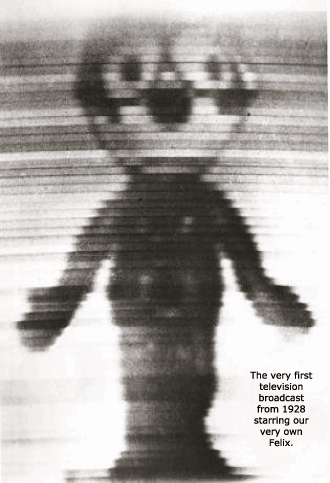Links and write-ups about beautiful things from around the web!
-
The So Called Mother of All Demos the
The so-called “Mother of All Demos”, the technology presentation given by Doug Engelbart of the Stanford Research Institute, which introduced to the world a number of useful developments: hypertext, the computer mouse, timesharing, email, video conferencing… And this was a bit over forty years ago, just before the ARPANET went online. Pretty amazing times.
The videos are available in more digestible chunks over on Stanford’s MouseSite.
-
Transformation optics as misdirection
From Nature, Optics: All Smoke and Metamaterials (subscription might be required, actual research publication available from the American Physical Society):
Seeing is believing — a naive assumption in the case of an illusion device proposed by Lai and colleagues at the Hong Kong University of Science and Technology, and described1 in Physical Review Letters. The new device has the power to ‘act at a distance’ and therefore covertly alter an object’s appearance such that it has no apparent physical connection to the light scattered by the object — although this becomes increasingly difficult to achieve the farther the illusion device is from the object. Lai and colleagues1 outline a mathematical formalism proving that it is theoretically possible to grab the rays of light emitted by a given object and to reconstruct them so that they seem to come from a completely different object.
Using metamaterials with refractive indexes less than zero to disguise the origin or content of reflected light. Not sure that I entirely understand this idea, but it’s sort of like the fabled “cloaking device”, except that instead of rendering an object invisible it actually renders it as a different object. Things will be weird fifty years from now.
-
Nick at Nite Indentity Bumpers
https://www.youtube.com/watch?v=LneBdFn5CME
A thorough set of the indentity bumpers from Nick at Nite, circa 1991. Kind of surreal (and tedious) watching these back to back, but it’s amazing how many of them I remember, and how many were done by well-known animators. This is where things were at in the early 90’s NYC animation trade. A number of these folks would later be rounded up in Atlanta to help create Cartoon Network. Sadly, all of these cable channels seem to have lost their sense of purpose, with Nick at Nite now showing ‘retro’ shows like “Just Shoot Me”, TV Land focusing on reality programming, and Cartoon Network becoming a dumping ground for kid’s live-action.
Related branding regression: MTV International drops the famous animated/adaptable MTV logo in favor of a static mark, and (the horror!) Nickelodeon is moving away from their venerable and innovative “splat” logo after nearly 30 years of it being awesome.
(Via Cartoon Brew, where a number of the folks who worked on the N@N promos have left comments)
-
NESynth iPhone app
-
Bell Lab‘s Blit Windowing System
(video no longer available)
Blit, an early Unix-based multitasking windowing system demo from Bell Labs, a precursor to the X Window System. X11 didn’t look much different ten years later, and true multitasking and multi-user systems have only recently filtered into the Mac and Microsoft Windows worlds. Not bad for 1982.
(Via 5cience)
-
Monkey Island 2 Special-Uber Edition
Monkey Island 2 Special-Uber Edition – Voodoo mama. I wish the real Monkey Island SE looked half as great as this. I’d sell my fine leather jacket if Monkey Island 2 SE came out this faithful to the original art. Double bonus points for getting a thumbs up from Steve Purcell himself!
-
First TV Broadcast: Papier Mâché Felix the Cat

This papier-mâché Felix the Cat was the first image to be broadcast over experimental television in preparation for the first public RCA broadcast in 1928. Black and white and made of durable material, they had him revolving on a turntable, beaming out as a tiny test image so engineers could adjust the signal. Early TV technology fascinates me.
There’s more good info on early test patterns over at Design Observer.
-
Logstalgia AKA Apachepong
http://www.youtube.com/watch?v=BYYX-h4-dpM
Logstalgia (aka ApachePong), a visualizer that turns Apache log file entries into an automated game of OpenGL Pong, with the server-paddle hitting requests back at the calling visitors. Pipe it through SSH and tail to get real-time infoviz. Hey, I’ve seen worse screensavers…
(Via O’Reilly Radar)
-
The Timing of Blinks

Update 11/3/2009: RadioLab did a short piece in October on this phenomenon, even discussing the Mr. Bean test with the Japanese researchers: http://blogs.wnyc.org/radiolab/2009/10/05/blink/
———-
From recent research out of Japan: “The results suggest that humans share a mechanism for controlling the timing of blinks that searches for an implicit timing that is appropriate to minimize the chance of losing critical information while viewing a stream of visual events.” In simpler words, the researchers found that audiences watching movies with action sequences have a strong tendency to synchronize their blinking so that they don’t miss anything good.
I’m not sure that this is interesting in and of itself, but it’s, um, eye-opening to think that we have our eyes closed for nearly 10% of our waking life. That’s roughly 10 full minutes of every movie lost to blinking. I imagine that editors already take this phenomenon into account, at least to some extent?
Full text available available in the Proceedings of the Royal Society B – Biological Sciences. Thanks, Creative Commons!
(Via NewScientist)
-
I Really Like This Set of 50×50 Pixel Short Films
Pixel Film:Oo. from garth+ginny on Vimeo.
I really like this set of 50×50 pixel short films by garth+ginny. Once again, constraints can lead to effective art.
(Via Offworld)
